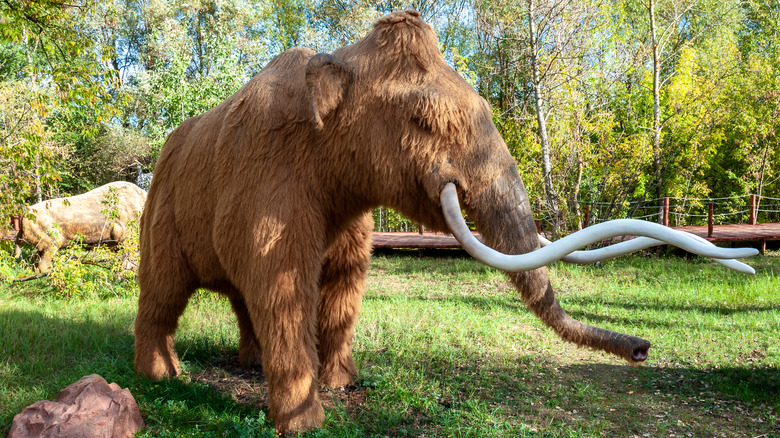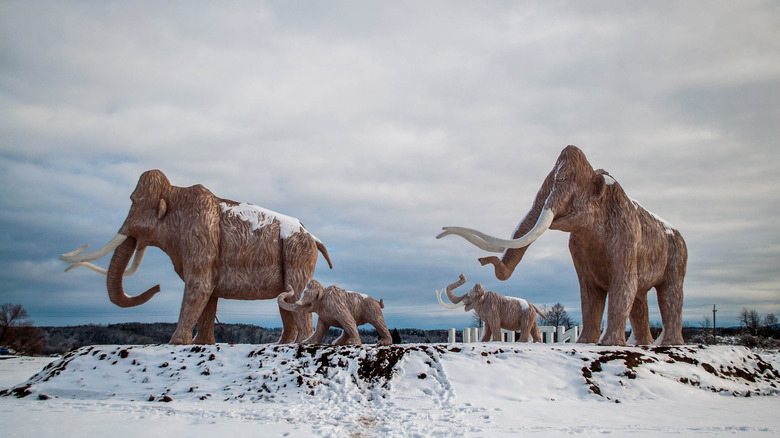How Scientists Might Bring Back The Wooly Mammoth
While we were all clutching our popcorn and screaming "No!" while watching dinosaurs wreak havoc on ill-equipped, modern-day humans in blockbusters like "Jurassic Park" and "Jurassic World," someone else was thinking, "Yes, but make it mammoths." Enter Pleistocene Park, a real-life attempt to resurrect the ancient and extinct land mammal known to all as the wooly mammoth.
Could this be the answer to climate change or the disaster we never knew we wanted? Only time will tell. In a candid interview with The Atlantic, co-founder Nikita Zimov, who is equal parts Russian scientist and rugged outdoorsman, said, "I'm not one of these crazy scientists that just wants to make the world green." His father, incidentally the co-founder of the park, went on to refer to their brainchild as "the largest project in human history."
That project is nestled deep in the wilderness of Russia's Northern Siberia, where experimental animal reintroductions have quietly been taking place for decades (via Pleistocene Park). If the scientists are successful, this area will eventually be transformed into a world that has not existed in over 11,700 years (via Live Science).
The goal is to resurrect hundreds of thousands of wooly mammoths to combat climate change
The Pleistocene Epoch was a time period that spanned more than 2 million years (via Live Science). The founders of Pleistocene Park and their supporters are only interested in replicating a specific time within that period — a time when the Arctic was covered in flourishing grasslands. They claim that by doing so, the ill effects of climate change could be reversed.
To that end, these scientists wish to bring back the ancient Pleistocene ecosystem that once existed during the Ice Age. The Atlantic reports that the ecosystem in question is scientifically referred to as Mammoth Steppe. This ecosystem derives its name from the presence and — more importantly — reliance on the large land mammal known as the wooly mammoth (via The University of Maine). Therefore, to pull off this project of unparalleled proportions, the team intends to resurrect not one or two, but hundreds of thousands of wooly mammoths.
Will the team be creating these creatures using DNA from old wooly mammoth fossils? Of course not, because that would be crazy. Instead, the mission is to utilize CRISPR technology to introduce wooly mammoth traits into the genes of currently existing Asian elephants. What could possibly go wrong?

